Behind the Scenes With Deep Look: The Diva Decorator Crabs
Deep Look has been exploring big scientific mysteries and revealing the unseen at the edge of our visible word since 2014. In early 2017, Deep Look welcomed a new host: Lauren Sommer, an award-winning KQED radio reporter who can make the most obscure science concepts clear and entertaining.
Lauren and key members of the Deep Look team give fans a behind-the-scenes look at what goes into crafting their weirdly wonderful videos. Below are highlights from interviews conducted while the team was shooting “Decorator Crabs Make High Fashion at Low Tide.”
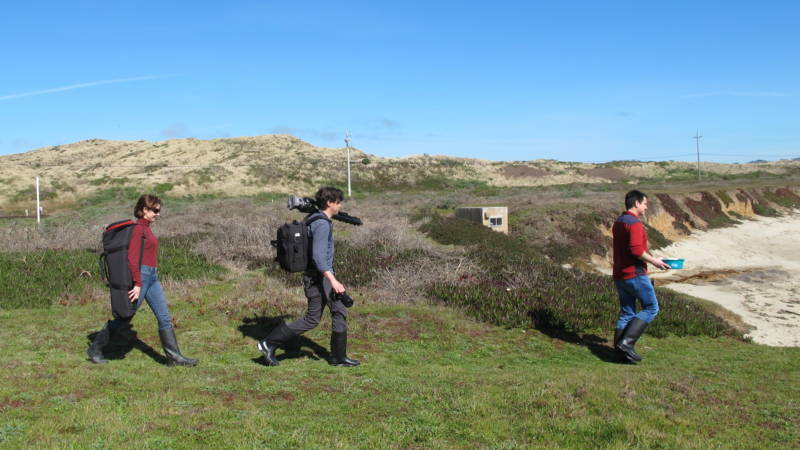
Lauren Sommer, Host and Writer
“Deep Look is all about the wonder in the natural world. There are so many surprising, weird and beautiful stories to uncover, even in things we encounter every day. You don’t have to be interested in science to find a Deep Look episode that’s captivating.”
“The producers come back with these really incredible images from the field. And I work with them on shaping the story and finding what the really fascinating tidbits are to highlight for our viewers.”
“One of my favorite things about Deep Look is that we ask how and why things happen at a very tiny scale. And from that, we discover some incredible universal truths that you never would think would be there. We usually end up tapping into our own human experience or things that all organisms on the planet share. You probably wouldn’t think you have a lot in common with a sea urchin or spider, but you’d be surprised.”
“As a radio reporter, I’m usually out in the field solo, gathering interviews and finding news. It’s been a lot of fun collaborating on writing scripts and shaping stories. I cover major science news stories like droughts and floods, so sometimes it’s nice to think about lighter things like an octopus’s suckers, finessing the . . . um . . . ‘action’ between two garden snails or a decorator crab’s latest bling.”
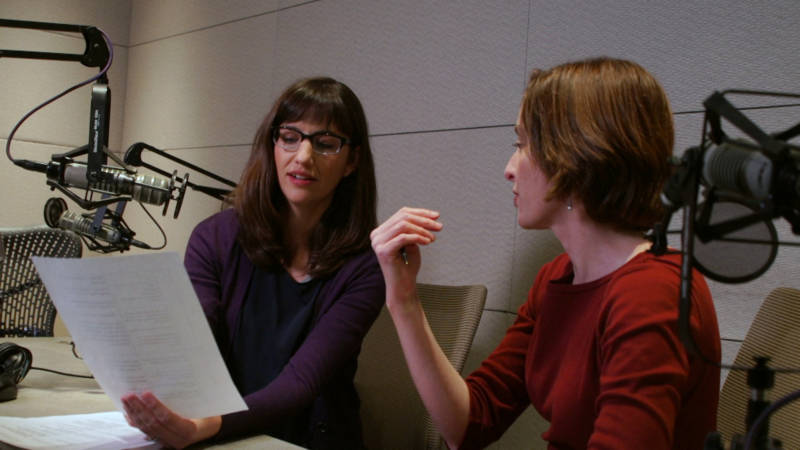
Gabriela Quirós, Coordinating Producer
“We aim to develop a story with characters and a narrative arc. We treat animals, or plants, as characters and try to figure out what they want, who or what is keeping them from getting what they want, and how they go about getting around these obstacles to achieve their goals. We want our stories to be as dramatic as possible, while remaining accurate.”
“The main challenge of producing Deep Look is that animals and plants are on their own schedules. When we went out to film the decorator crabs, we waited almost two full days, and in the afternoon of the second day, they finally decorated for a total of about 15 minutes. Here’s an interesting fact that didn’t make it into the video: When decorator crabs outgrow their shells and molt, they sometimes transfer seaweed and anemones from their old shells to their new shells. So even decorator crabs can’t seem to let some old outfits go!”
“Inevitably, there’s that moment when you’re looking through the camera lens, and you see the animal or plant doing that thing that the scientists described, and it’s so fantastic. I really hope that what we’re conveying to viewers is, ‘Look how amazing the natural world is!’”
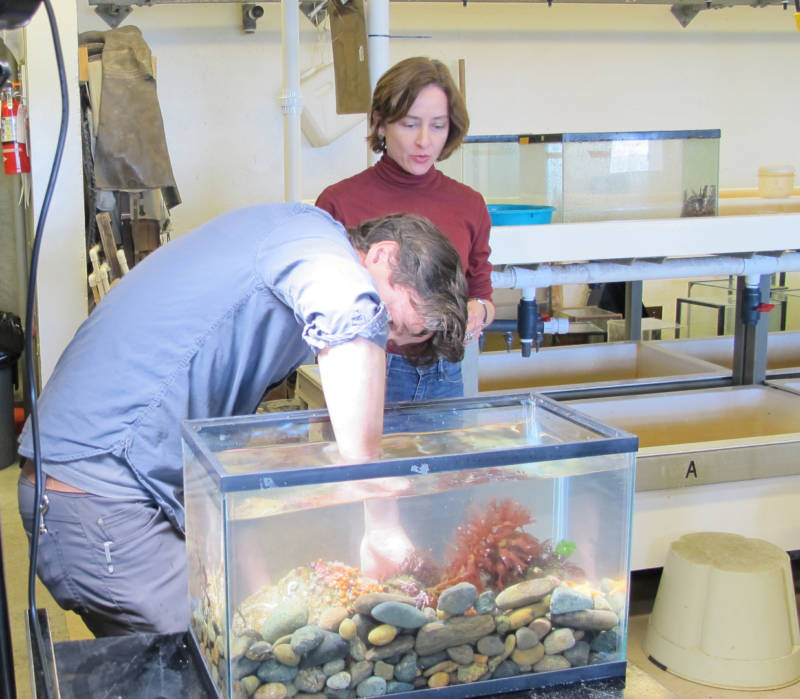
Josh Cassidy, Lead Producer and Cinematographer
“We really like answering a big scientific question by zooming in on our subject, like decorator crabs. When you look at a decorator crab’s shells with your naked eye, the shells look kind of fuzzy, but with the macro lens you can zoom in and really see the hooks that hold the kelp, which look a lot like Velcro.”
“Filming in the wild is always fun and always super challenging. The tide pools are a perfect example of a place that’s constantly changing. The waves can be coming in, and you can never really focus completely on whatever it is you’re filming. I have to keep at least one eye on the waves to make sure I don’t get swept out. I’ve spent a couple of very short trips into the ocean with my camera equipment and, of course, nothing can wreck electronics and optical equipment quite like sea water!”
“In this line of work, it’s always the instant that you look away when the action happens, so you have to stay focused. It was a great feeling to finally catch that whimsical moment when the crab started to get dressed like it was about to go out on the town. After a while they become their own little walking ecosystems. Nature is full of surprises.”
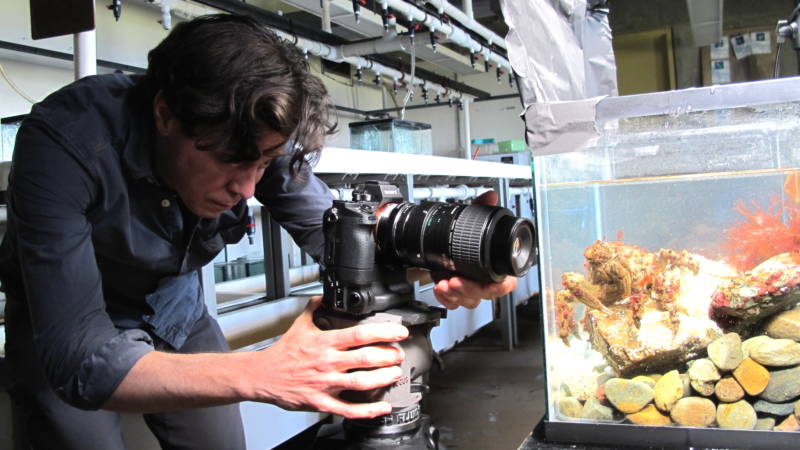
Elliott Kennerson, Producer and Post-Production Coordinator
“We love to create a sense of magic and wonder around nature; it’s really a collaborative show. The stories are all discovered by the individual producers, but then workshopped among the producers as well as with our host, Lauren.”
“Before shooting begins, the producers do a lot of research so we can anticipate what’s going to happen when we get out there. That means understanding whatever animals we’re filming as well as the conditions we’ll be filming in. We go in with a plan for getting what we need for the show, but, that said, nature is always surprising! Sometimes we have to scrap the plan and work on the fly.”
“Macro cinematography works best when you can control the conditions. That’s a tall order in the wild. Often we’re working in a scientist’s lab or in our studio at KQED, where we have the best chance of controlling the things that can work against you on a shoot, like light, temperature and weather. Sometimes we build little sets for the critters that mimic natural conditions that allow us to capture their behaviors.”
“Doing this type of cinematography is incredibly difficult. It’s also not always the kind of thing where we can look into the camera as we’re filming and know that we got our shot. Often we don’t even know until we are sitting in the edit room and looking at the footage. That’s when we know we can pull together a show.”
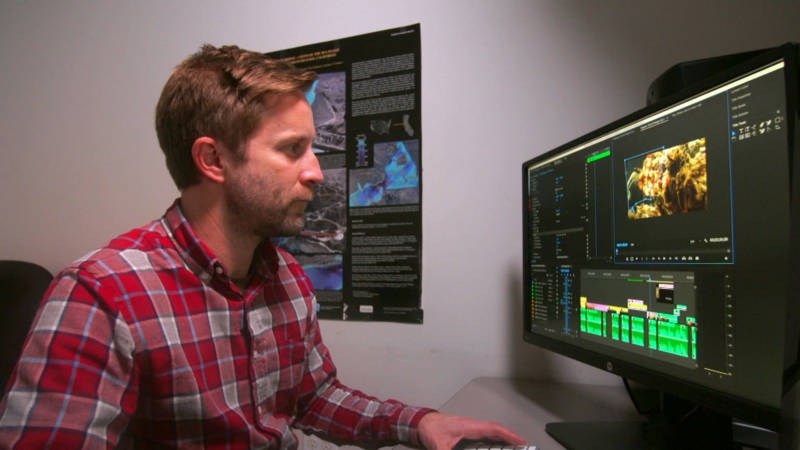
Check out our first Behind the Scenes episode for more insider information on camera tricks and water, and be sure to watch the crabs due their fashion thing: “Decorator Crabs Make High Fashion at Low Tide.” Watch new videos twice a month and show us some love by subscribing to Deep Look on YouTube.
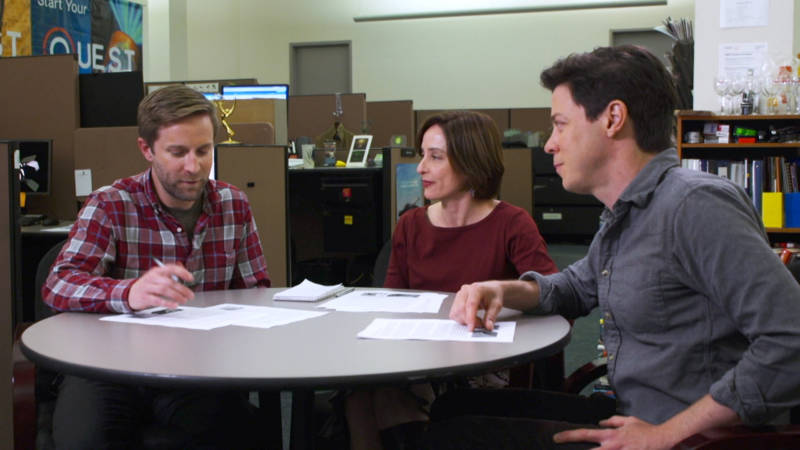
Deep Look’s core production team includes: Craig Rosa, series producer; Lauren Sommer, host and writer; Gabriela Quirós, coordinating producer; Josh Cassidy, lead producer and cinematographer; and Elliott Kennerson, producer and post-production coordinator. In addition, each episode is accompanied by an original musical score by Seth G. Samuel as well as additional editing and motion graphics by Kia Simon. Many episodes also feature animations by Teodros Hailye. The original story idea for the episode about decorator crabs came from Deep Look’s intern Jacob Shea, a student at the University of California at Berkeley Graduate School of Journalism.